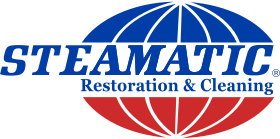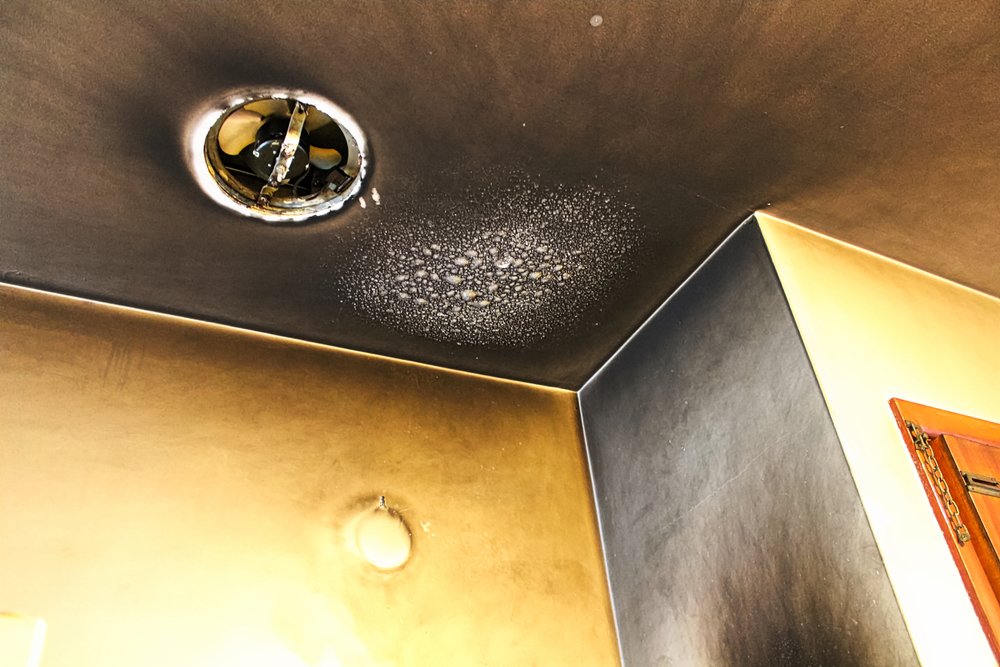The destructive impacts of fire are obvious. You could lose valuable belongings, irreplaceable heirlooms, and even your home itself. But after the fire’s been put out, it still causes even more problems. In its aftermath, smoke and soot damage can render your home uninhabitable. Learning about the effects of soot and smoke can help you understand what’s at stake—and how soot and smoke damage cleanup are critical to getting your home back.
How Do Smoke and Soot Affect Your Home?
Smoke and soot from a fire can cause major damage inside your home. The smell may hit you the moment you re-enter your house, but it’s not the only thing you have to worry about. Your home can be affected in many ways—staining, corrosion, and even health impacts. That’s why smoke damage restoration is an important key to recovering from a fire.
Soot Inhalation
When trying to understand fire and smoke damage, you may ask, “What is soot?” Soot is black carbon particulate matter that fire generates when it doesn’t completely consume its fuel source. And naturally, fires leave a great deal of soot in your home. Inhaling it can damage human health, irritating the lungs and air passages. Other health risks include shortness of breath and respiratory disease. Fire soot inhalation can worsen existing conditions such as asthma.
You could directly breathe in soot if you enter your home after a fire. However, these soot particles can also end up in your HVAC system. When you run your central air or heat, soot can recirculate via your HVAC duct system.
Smell
Fires in your home leave behind a telltale smell. Many organic carbon materials, especially wood, produce toxic smoke when burned—and that smoke contains polycyclic aromatic hydrocarbons. These compounds either bind to or form tiny particles in the air.
Polycyclic aromatic hydrocarbons are naturally found in many materials. But a house fire can release huge concentrations, far more than what’s safe for human health. These compounds plus soot particles can also make their smoky odor stick to fabric, carpet fibers, and other soft surfaces. Even worse, the odor can sink in and become extremely difficult to remove.
Staining
Soot particles are typically ionized during a fire. This particulate matter also gets a mild electrical charge through ionization by either gaining or losing electrons at the atomic level. These particles become attracted to various types of surfaces. You’ll often see soot cluttered around nail heads and other metals in your walls and floors, thanks to the magnetic attraction. Once that black carbon is deposited onto a surface, soot can wreak some major havoc—and it doesn’t matter what type of surface it touches.
Skin Irritation
Skin irritation is another one of the health risks from exposure to soot. Besides aromatic compounds and particle pollution, fires can produce heavy metals and ozone. Smoke and soot emissions may cause long-term damage to cellular DNA and collagen, a critical protein that makes up your skin. Short-term effects can include dry skin and clogged pores, plus aggravating existing conditions such as rosacea.
Corrosion
Believe it or not, particle pollution from organic carbon can corrode many surfaces. Soot emissions are highly acidic, and that acid interacts with metal through electrochemical processes.
This corrosion doesn’t just affect the metal you can see—your plumbing fixtures and doorknobs, for instance—but it also causes damage in places you can’t see. Water pipes and HVAC ductwork also slowly corrode, and you may not notice it until you end up with leaky pipes or another fire.
Eye Irritation
Besides skin problems and lung diseases, smoke and soot can cause eye irritation. These microscopic particles of organic matter dry out delicate eye tissues. The chemicals they contain can sting and burn, but you may also experience red and itchy eyes after exposure. Considering this plus other health effects of soot, hiring smoke damage restoration professionals is a smart move.
Smoke and Soot Damage by Surface Type
Both black carbon and brown carbon smoke can leave behind particles and odors. You’ve already seen the aftermath of fire and smoke damage, both to your health and generally within your home. Time is of the essence with soot and smoke damage cleanup. With their toxic and acidic properties, they can harm physical surfaces in a number of ways.
Curtains and Upholstery
Contrary to common belief, vacuuming curtains and upholstery does not help. In fact, vacuum beaters and brushes can drive soot and smoke odors deeper into fabric and fibers. The furniture and drapes may look clean, but you’ll still detect that lingering smoke odor and see these items degrade even further.
Furniture and Carpet
Just as vacuuming after a fire can make odors and soot stick to curtains and upholstery, the same is true for carpet and other furniture. And if you use a carpet steamer, both wooden and metal furniture can leave stains on the carpet.
Hard Flooring
Along with the effects of soot and smoke, a home fire could indirectly lead to water damage. After the fire is extinguished, you’ll probably find water from fire hoses all over the place. Regardless of how much is left behind, any standing water can break down wood flooring and cause it to rot. Other types of flooring may also need to be refinished or replaced.
Porous Hard Surfaces
Fire hoses emit water at high pressure, damaging porous hard surfaces like drywall, wallpaper, paint, plaster, and exposed wood. Another one of the effects of soot is discoloration, which can worsen as organic carbon soot sits on and sinks into these surfaces. Smoke damage restoration technicians have tried-and-true techniques for removing this soot without pushing it into the material.
Plastic and PVC
Plastic and PVC materials are especially prone to smoke and soot damage. Both are already porous, which means that they can easily collect more soot than other kinds of hard surfaces. And just like cleaning soot from other surfaces, you could inadvertently worsen the damage or risk your health. Plastic, PVC, and vinyl also discolor quickly.
Your Dallas-Fort Worth Home Restoration Experts
Soot and smoke damage in your house can have major financial and health impacts. You can experience problems like skin irritation, eye irritation, discomfort, and even respiratory disease in the aftermath of a fire. Both smoke and soot leave behind nasty odors and stains, plus corrosion and breakdown of both soft and hard surfaces—flooring, countertops, furniture, clothing, bedding, carpets, and much more. And it doesn’t matter whether you’re dealing with a high-temperature fast-burning blaze or a smoldering fire with brown carbon smoke.
Attempting smoke damage cleanup yourself puts your health and belongings at risk. And with so many other things to worry about after a fire, you need experts on your side. Count on Steamatic of Dallas-Fort Worth for professional fire and smoke damage repair. Our friendly certified restoration professionals help you every step of the way. Get in touch with us through our contact form or call (817) 632-1555.
Image Source: Amelia Martin / Shutterstock







